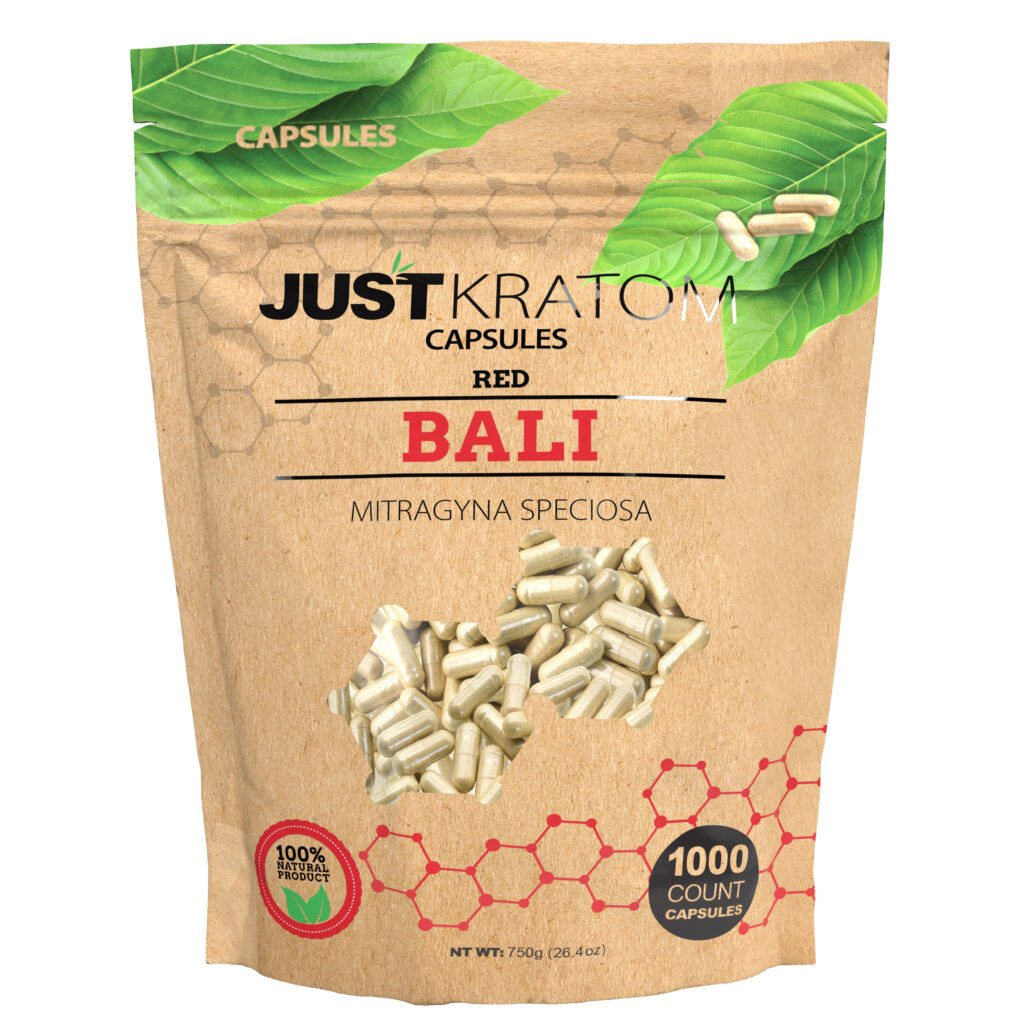Potential Benefits of Kratom for Mood Swings
Experiencing unpredictable mood swings can be disruptive and distressing, impacting daily life and relationships. Kratom, an herb with a growing reputation for its potential therapeutic benefits, has recently emerged as a possible aid in managing these emotional fluctuations.
Mood-Elevating Effects
Kratom is believed to interact with opioid receptors in the brain, which may contribute to its mood-elevating effects. Some users report feeling calmer and more balanced after consuming kratom, potentially helping to mitigate the intensity of mood swings.
However, it’s important to note that research on kratom’s effectiveness for mood disorders is limited, and individual experiences can vary widely. More studies are needed to fully understand its potential benefits and risks.
Stress and Anxiety Reduction
Kratom’s potential benefits for mood swings, stress, and anxiety reduction stem from its interaction with opioid receptors in the brain. This interaction is thought to contribute to feelings of relaxation and euphoria, potentially helping to alleviate emotional distress.
Some users report experiencing a sense of calmness and balance after consuming kratom, suggesting it may be helpful in managing the intensity of mood swings. Furthermore, its potential to reduce stress and anxiety aligns with its purported mood-stabilizing effects.
While anecdotal evidence supports these claims, scientific research on kratom’s effectiveness for mood disorders is still limited. Further studies are necessary to fully understand its potential benefits and risks.
Pain Management and Its Impact on Mood
Kratom has gained attention as a potential remedy for pain management due to its interaction with opioid receptors in the body. These receptors are involved in regulating pain perception, and kratom’s activation of these receptors may contribute to its analgesic effects.
Users report experiencing pain relief from various conditions, including chronic pain, muscle soreness, and arthritis. However, it is important to note that research on kratom’s efficacy for pain management is still ongoing and more studies are needed to confirm its effectiveness and safety.
Kratom’s impact on mood can be multifaceted. While some users report experiencing feelings of euphoria and relaxation, others describe a sense of calmness and mental clarity. These effects are attributed to kratom’s interaction with opioid receptors in the brain, which are also involved in regulating mood.
However, it’s important to remember that individual responses to kratom can vary widely, and its impact on mood may depend on factors such as dosage, strain, and individual sensitivity.
How Kratom Might Work to Balance Emotions
Kratom, an herb increasingly recognized for its potential therapeutic properties, has garnered attention for its possible role in managing emotional fluctuations.
It is believed that kratom interacts with opioid receptors in the brain, potentially contributing to mood-elevating effects and a sense of balance. Some individuals report experiencing reduced anxiety and stress after consuming kratom, suggesting its potential as a tool for mitigating the intensity of mood swings.
Interaction with Opioid Receptors
Kratom is believed to interact with opioid receptors in the brain, which may contribute to its mood-elevating effects.
- These opioid receptors are involved in regulating pain, pleasure, and mood.
- By activating these receptors, kratom may lead to feelings of euphoria, relaxation, and reduced anxiety.
- Some users report experiencing a sense of calmness and balance after consuming kratom, suggesting it may help manage the intensity of mood swings.
Influence on Neurotransmitter Levels
Kratom is believed to exert its potential mood-balancing effects through its interaction with opioid receptors in the brain. These receptors play a crucial role in regulating various functions, including pain perception, pleasure, and emotional states.
By binding to these receptors, kratom may trigger the release of neurotransmitters like dopamine and serotonin, which are associated with feelings of happiness, well-being, and reduced anxiety. This interaction could contribute to the reported mood-elevating and calming effects of kratom.
Dosage and Considerations for Using Kratom for Mood Swings
Kratom has emerged as a potential natural remedy for managing mood swings, with proponents citing its ability to promote calmness and emotional balance.
Believed to interact with opioid receptors in the brain, kratom may influence neurotransmitter release, potentially leading to feelings of euphoria, relaxation, and reduced anxiety. While anecdotal evidence suggests its effectiveness, scientific research on kratom’s impact on mood disorders is still limited.
Finding the Right Dosage
Finding the right dosage of kratom for managing mood swings is a highly individual process. It depends on factors like body weight, metabolism, experience with kratom, and the desired effects. It’s crucial to start with a low dose (1-2 grams) and gradually increase it until you find the optimal amount that provides relief without unwanted side effects.
Pay close attention to how your body responds at each dosage level. If you experience any adverse effects, such as nausea, dizziness, or anxiety, reduce the dose immediately.
Remember, there is no one-size-fits-all approach to kratom dosage. Be patient, listen to your body, and adjust your intake accordingly.
Frequency and Duration of Use
Finding the right dosage of kratom for managing mood swings is a highly individual process. It depends on factors like body weight, metabolism, experience with kratom, and the desired effects.
It’s crucial to start with a low dose (1-2 grams) and gradually increase it until you find the optimal amount that provides relief without unwanted side effects. Pay close attention to how your body responds at each dosage level. If you experience any adverse effects, such as nausea, dizziness, or anxiety, reduce the dose immediately.
Remember, there is no one-size-fits-all approach to kratom dosage. Be patient, listen to your body, and adjust your intake accordingly.
The frequency of kratom use for mood swings should also be tailored to individual needs and responses. Some individuals may find benefit in taking kratom daily, while others might prefer a less frequent schedule.
It’s important to avoid overuse as this can lead to tolerance buildup and potential adverse effects. Start with using kratom every other day or a few times per week and gradually adjust the frequency based on your experience and how effectively it manages your mood swings.
Monitoring your progress and making adjustments as needed is crucial for safe and effective use.
Potential Side Effects and Risks
Finding the right dosage of kratom for managing mood swings is a highly individual process. It depends on factors like body weight, metabolism, experience with kratom, and the desired effects. It’s crucial to start with a low dose (1-2 grams) and gradually increase it until you find the optimal amount that provides relief without unwanted side effects.
Pay close attention to how your body responds at each dosage level. If you experience any adverse effects, such as nausea, dizziness, or anxiety, reduce the dose immediately.
Remember, there is no one-size-fits-all approach to kratom dosage. Be patient, listen to your body, and adjust your intake accordingly.
The frequency of kratom use for mood swings should also be tailored to individual needs and responses. Some individuals may find benefit in taking kratom daily, while others might prefer a less frequent schedule.
It’s important to avoid overuse as this can lead to tolerance buildup and potential adverse effects. Start with using kratom every other day or a few times per week and gradually adjust the frequency based on your experience and how effectively it manages your mood swings.
Monitoring your progress and making adjustments as needed is crucial for safe and effective use.
While some individuals may find relief from mood swings using kratom, it’s important to be aware of potential side effects and risks.
- Nausea and Vomiting: These are common side effects, particularly at higher doses or when starting with kratom.
- Constipation: Kratom can cause constipation, so staying hydrated and consuming fiber-rich foods is important.
- Drowsiness and Fatigue: Kratom can have sedative effects, which may lead to drowsiness or fatigue.
- Headaches: Some individuals experience headaches after consuming kratom.
- Anxiety and Insomnia: In some cases, kratom can worsen anxiety or cause insomnia, especially at higher doses or when taken late in the day.

It’s crucial to consult with a healthcare professional before using kratom, as it may interact with medications or pre-existing medical conditions.
Important Safety Precautions
Before experimenting with kratom for mood swings, it is essential to prioritize safety and well-being. Kratom can have side effects and potential interactions, so consulting a healthcare professional is crucial.
Contraindications and Interactions
Kratom should be approached with caution, as it’s not approved by the FDA for any medical use. Potential risks and side effects need to be carefully considered.
It’s crucial to consult with a healthcare professional before using kratom, especially if you have pre-existing medical conditions or take medications, as interactions can occur.
Individuals with substance use disorders or those at risk for addiction should avoid kratom due to its potential for dependence.
Kratom may interact with certain medications, including opioids, antidepressants, and blood thinners. Inform your healthcare provider about all medications and supplements you are taking before using kratom.
Pregnant or breastfeeding women should avoid kratom as its safety during these periods is unknown.
Legality and Regulations
It’s crucial to consult with a healthcare professional before using kratom, especially if you have pre-existing medical conditions or take medications, as interactions can occur.
Individuals with substance use disorders or those at risk for addiction should avoid kratom due to its potential for dependence.
Kratom may interact with certain medications, including opioids, antidepressants, and blood thinners. Inform your healthcare provider about all medications and supplements you are taking before using kratom.
Pregnant or breastfeeding women should avoid kratom as its safety during these periods is unknown.
The legal status of kratom varies depending on the location. In some countries and states, it is legal and can be purchased over-the-counter, while in others, it is restricted or outright banned.
It is important to be aware of and comply with the laws regarding kratom in your region.
Consulting a Healthcare Professional
Before using kratom for any purpose, including managing mood swings, it’s crucial to consult a healthcare professional. They can assess your individual health status, potential risks, and interactions with medications or existing medical conditions.
It is essential to discuss any supplements you are considering, including kratom, with your doctor.

Alternative Therapies for Mood Swings
Alternative therapies for mood swings offer various options for those seeking complementary approaches alongside traditional treatments. One such therapy gaining attention is kratom. Kratom, a tropical tree native to Southeast Asia, has been traditionally used for its purported mood-elevating and pain-relieving effects.
Kratom’s potential benefits for mood swings stem from its interaction with opioid receptors in the brain. These receptors play a role in regulating pain perception, pleasure, and emotional states. By activating these receptors, kratom may trigger the release of neurotransmitters like dopamine and serotonin, which are associated with feelings of happiness, well-being, and reduced anxiety.
However, it’s important to approach kratom with caution. Research on its effectiveness for mood disorders is still limited, and more studies are needed to fully understand its potential benefits and risks. Additionally, kratom can have side effects, such as nausea, constipation, drowsiness, and headaches.
It’s crucial to consult a healthcare professional before using kratom, especially if you have pre-existing medical conditions or take medications, as it may interact with certain drugs. Individuals with substance use disorders should also avoid kratom due to its potential for dependence.
Other alternative therapies for mood swings include:
* **Yoga and meditation:** These practices promote relaxation, reduce stress, and enhance emotional well-being.
* **Acupuncture:** This traditional Chinese medicine technique involves inserting thin needles into specific points on the body to stimulate energy flow and balance, which may help regulate mood.
* **Herbal supplements:** Certain herbs, such as St. John’s wort, have shown promise in treating mild to moderate depression, but it’s essential to consult a healthcare professional before using them as they can interact with medications.
Remember that finding the right treatment approach for mood swings is a personal journey.
Buy Kratom capsules for overall wellness
